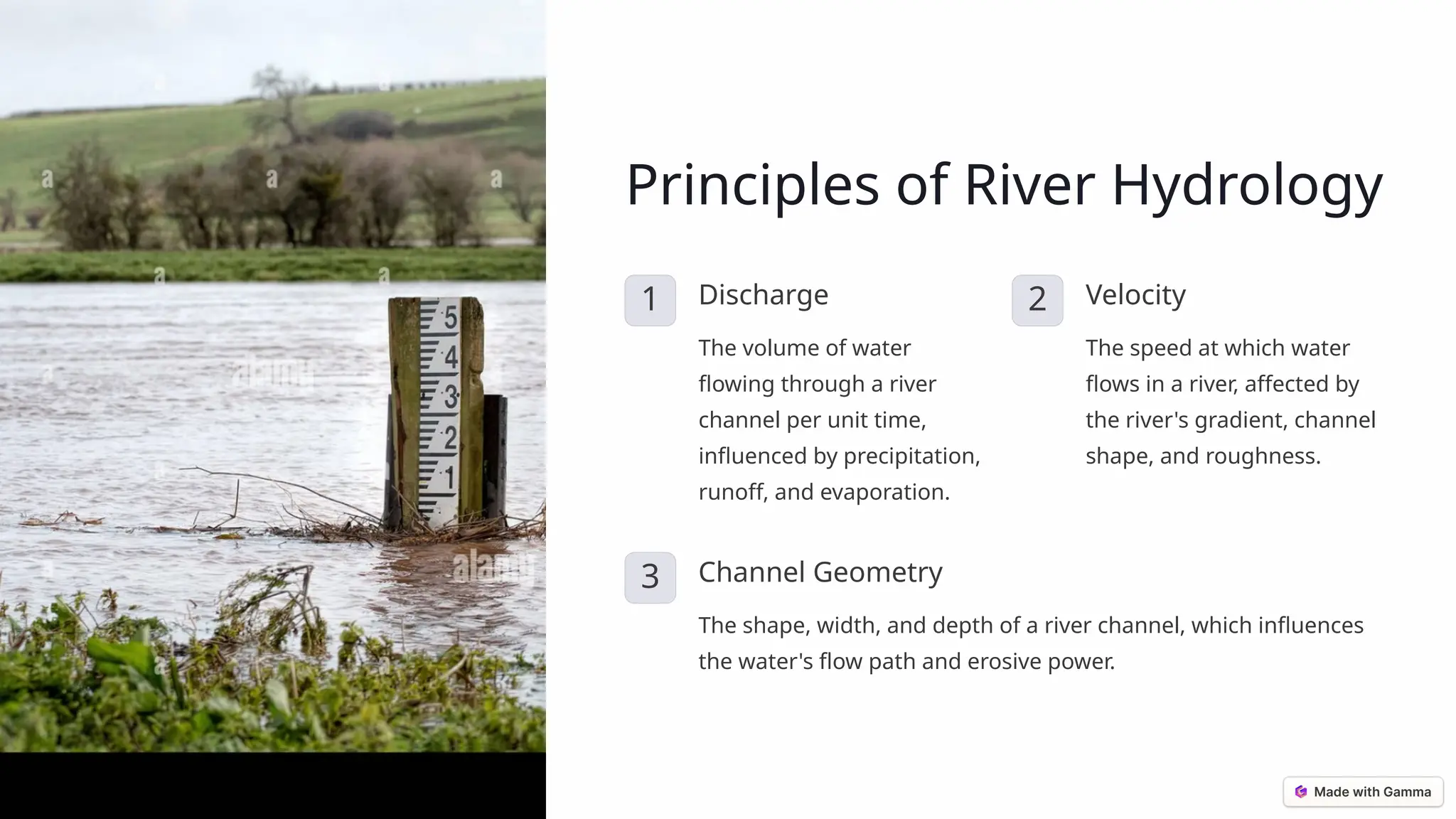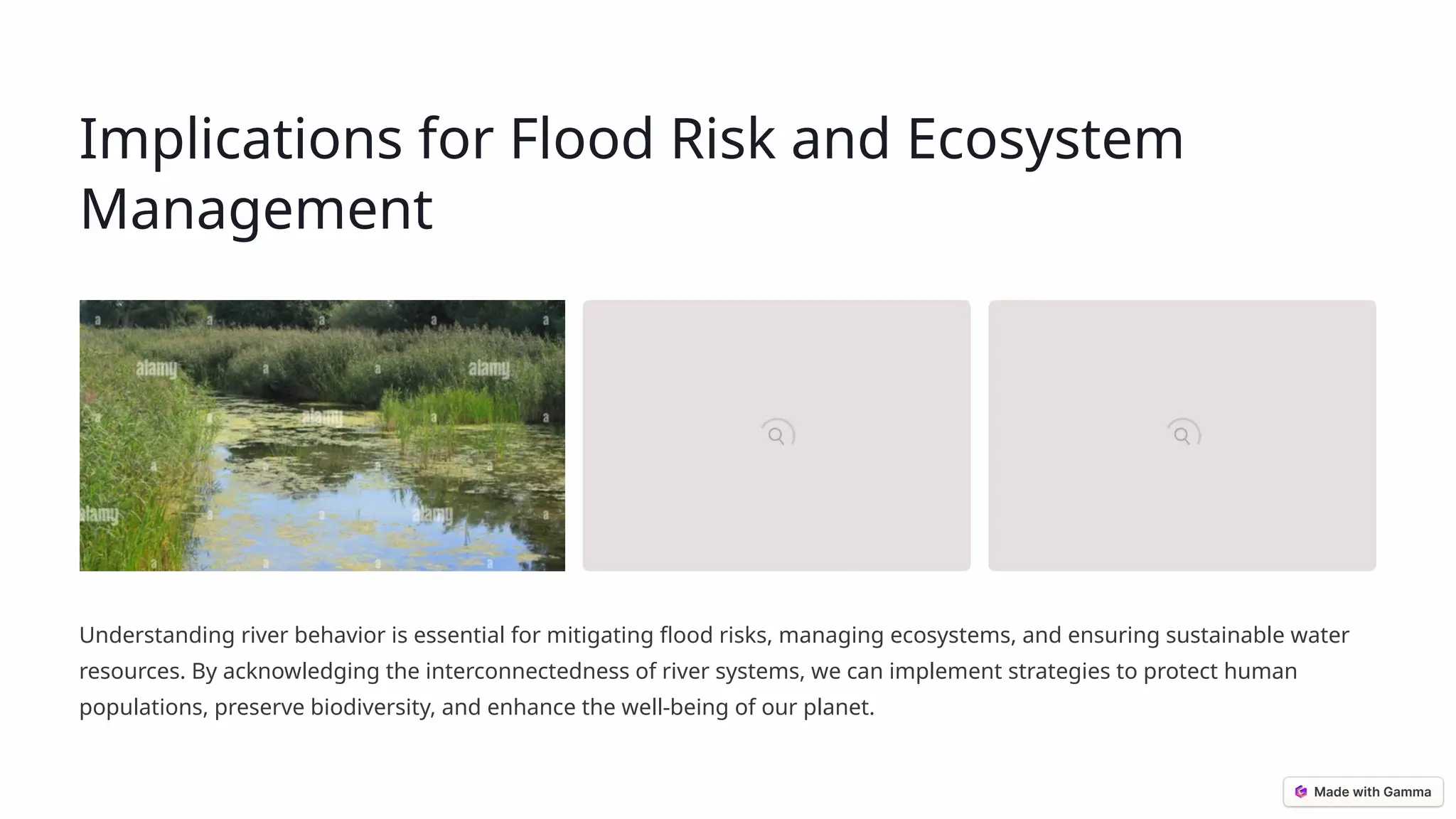Rivers, the lifeblood of our planet, are dynamic systems constantly shaping landscapes and sustaining ecosystems. This presentation delves into the intricate workings of rivers, exploring the forces that drive their flow and the processes that transport sediments, ultimately influencing their morphology and the environments they support.









